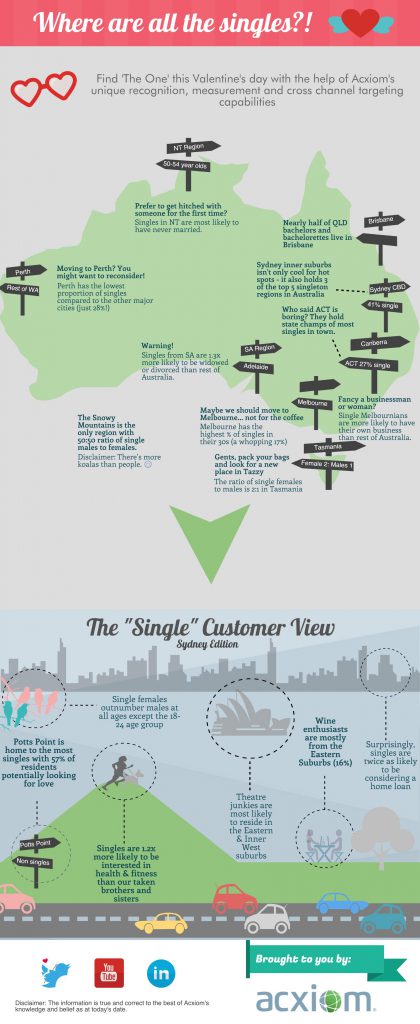
Technology is stuff that doesn’t work yet.
— Bran Ferren
Bran Ferren’s words echo across the wifi to us like a premonition. The former President of R&D at Walt Disney Imagineering’s deep understanding of the way people use and engage with technology is only starting to play out in the devices that we so readily take for granted. The fact that we can call a piece of technology, a “device” at all shows how far we have come; after all, a device is something personal, knowable, intimate. And it was only twenty-odd years ago that carrying a “mobile phone” could put your back out. Personal technology is shrinking at a considerable rate.
Big Machines, Small Data
For decades, technology has driven business innovation, resulting in the rise of professional services firms, technology companies and most recently, software platforms. Until the early 90s, we designed systems around single business functions – like purchasing or order management. While this was a huge improvement on previous systems, it entrenched departmental silos and required duplication of work – put simply, the same information had to be entered into completely separate systems. Occasionally, the IT teams were able to integrate systems – connecting some pieces of data together, but this also required governance, standards and compliance – which added cost and complexity to already complex systems.
At the centre of this data frontier were the CIOs – vital drivers of innovation and productivity in almost every business. And held tightly in their grasp was information.
We realised that the faster we could crunch business information, the faster we could make decisions. Accordingly we built electronic supply chains, implemented ERP systems and automated what we could. We brought disparate systems together with a single package providing a reliable flow of data from one department to another. We had massive computers pumping relatively small amounts of data through relatively small, connected pipes. In some cases, remote controllers would be hooked up to servers via dial-up connections – and these ran multinational businesses!
The focus for all this innovation was the “back office” – far away from the prying eyes of the customer.
The Rise of the Front of House
While ERP innovation was driving efficiencies within the hardened arteries of businesses, the sales and marketing folks were still working from the same trusty rolodex and dog-eared business cards they had used since the Great Depression. But Tom Siebel had other ideas. His company was to do to customer relationships what SAP had done to finance and enterprise resource planning. The vision was – as it remains today – a single view of the customer. Like many grand visions, the reality remains tantalisingly out of reach.
But this focus on customer facing business functions, brought sales and marketing into the connected enterprise. Customer billing systems, processing, pipeline and opportunity management and a range of other functions were all digitised – and the field of business re-engineering flourished. Consultants had learned through the ERP years that return on investment lies in business users actually using these systems – and that meant customisation, training and change management. In large enterprises, this task was enormous – but was largely contained by the limits of the business. The focus was on engineering the business not extending beyond the safety of the firewall.
After all, even the top of the range, slimline laptops were clunky, heavy and slow in performance. And the business systems were ugly, hard to use and the data networks were notoriously unreliable. It appeared that innovation was always going to stop at the dizzy limit of a thin blue ethernet chord. And everything from the design of the software and hardware through to the challenges of remote access served to remind us that we were always operating out of our comfort zones – that we were dealing with technology that could both help and hinder us.
Outside-In Innovation and the Crowd
While most businesses were licking their wounds after the dotcom bomb, a new generation of tech entrepreneurs flew below the radar to create a whole new way of connecting the dots around businesses. These emerging social networks skipped the B2B market and launched direct to consumers, corralling vast swathes of the population into tightly bunched, loosely connected groups.
Similar to the way that dolphins collaborate to feast on an abundance of school fish, fast moving digital platforms like Google, Facebook and Yahoo skirted around our flanks and drove us together. Overwhelmed by the speed but excited by the possibilities, we willingly handed over our privacy, location and even identity in order to join with others who were “just like me”.
These platforms, working at warp speed, innovated at the speed of customer experience. They were unencumbered by years of process, archaic business systems and entrenched ways of working. They pushed out new features to the delight or disgust of their members, changed as necessary and moved on.
Sensing a fickleness in the consumer landscape, these fast growing startup enterprises blitzed past the “sense-and-respond” mantra proffered by management consultants the world over and created “lean” businesses that responded to changing conditions through automation, strategic outsourcing and peer-oriented customer service. The suggestions of the crowd – the paying customer – drove changes in business models, product features and even business strategy.
And all this outside-in innovation was happening from the comfort of our homes, with the convenience of technology we could hold in our hands.
The Internet of Things Gives Way to the Internet of Me
The real revolution in all this is three-fold:
- Consumers have built their own ecosystems around the experience that they want to create and curate for themselves
- “Technology” is disappearing from our lives, shrinking to a size that can be incorporated into our daily fashions
- Data is proliferating and permeating devices, systems and everywhere in-between
At the moment we are seeing the Internet of Things gaining traction in our homes, workplaces and public spaces. Connected by low bandwidth protocols like bluetooth, devices like Withings weight scales function like an analogue machine, displaying your weight – but add an additional dimension powered by the web and big data. Not only is your weight captured, your profile is queried in real time, and your height details are returned. Then your BMI is displayed while your latest reading is transmitted back to the cloud.
In some retail stores, sensors like iBeacons track your movement and signal your identity based on the apps running on your phone. Store assistants are proactively updated on your current status, interests and so on, and are ready to more readily assist you. Sound creepy? It’s already happening.
This is no longer the internet of things, but the internet of me. We are creating personal versions of the same kind of ERP networks that were developed in the 90s – linking our payment systems (banks) to our supply chains (shops) through sensors, apps, profiles and devices that we carry or wear at all times. And all of this is happening largely out of our view. It’s invisible. And once it becomes invisible it becomes “the way of life”.







